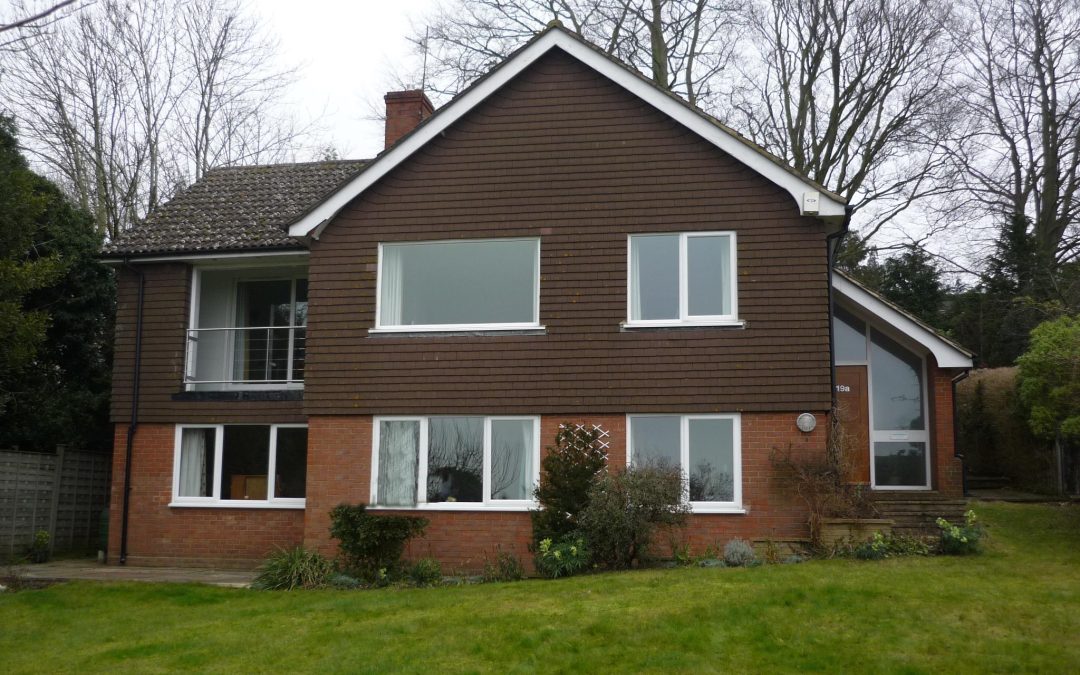1. Look for a good shape
Look for a house with a good shape, as this will be a better candidate for remodelling, particularly if you want a traditional look. The more you try and move a house away from a style it lends itself to, the more it will cost to achieve.
For example if you are looking for a traditional style then try to avoid large cat slide roofs or asymmetric lines, unless you are prepared to extend. A more contemporary style allows a bit more freedom with unusual shapes.
Bear in mind that if the problem area is to the front, front extensions can be contentious with the planners so if you can, double check with your local authority what their view is on these, or look at your close by neighbours to see if anyone else has done the same.
2. Planning Permission/Permitted Development
We always recommend when looking to do work to a new house that you speak with your local authority to ask them what restrictions apply (if any) and the planning history of the property prior to making a purchasing decision. This can often be done online or over the phone. The common ones are: Conservation area, Green Belt, Area of Outstanding Natural Beauty (AONB), Outside of settlement boundaries or Rural (often treated the same as Green Belt), National Parks and Flood Zones – although there can be many others according to the area.
Falling within a restricted zone doesn’t mean you can’t do what you want but it will influence the design, so try and find out as much as you can so there are no nasty surprises along the line. Many local authorities still offer planning surgeries, which are available for a small fee and can be a great way of getting some impartial advice on your plans.
It is often not known that you can do work to a house and often extend without needing planning permission. This is called Permitted Development Rights or PD. What you can do under PD will vary according to the planning restrictions (outlined above) and can sometimes be removed if a house has been extended a lot, so again best to check that the property has all its PD rights intact. There is a really helpful Interactive House on the Planning Portal, which helps you to understand what typically needs planning and what could be done under PD.
3. Extending
Buying a house that has to be extended to be big enough to accommodate your family can be risky. If you can, get pre-app advice but bear in mind this is not legally binding, is the planning officer’s opinion based on policy at the time and doesn’t take into account your neighbours or other consultee opinions, such as Parish Councils.
Whilst a precedent in the area is a helpful justification for extending and carrying out work to a property, it’s best not assuming that because everyone else is doing it, you can too. Planning Policy changes with the times so what you could do 10 years ago might not be possible today.
4. Loft conversions
Loft conversions are a great way to get more space but there are a few things to watch out for. To comply with Building Regulations you need to have a finished head height above the stairs of 1.9 metres if you plan to have 1 room and 2.00 metres for more than 1 room. The ceiling joists need to be strengthened and extra insulation needs putting into the roof, squeezing you from the bottom and top. Generally you will loose between 250-300mm of overall head height in doing this. Consider what you would want to use the space for and check you have sufficient head height to make it work.
The pitch of the roof needs to be considered and the amount of usable space you will end up with. If you can find out what the structure is this will also help you in your decision-making. A truss loft is generally much more expensive to convert than a cut loft.
5. Condition
Often houses that require remodelling are not only dated externally but internally too, with electrics and plumbing in need of upgrading along with kitchen and bathrooms, flooring, windows and doors, re-decorations….the works! These areas not only add cost but can cause a lot of disruption so ask the vendor for as much information as possible on these areas (eg. has the house been re-wired/plumbed and if so, when) to get a feel for what extra costs will be involved.
6. Building Regulations
Something that is easily overlooked when considering remodelling the external appearance of the house is ensuring it meets UK Building Regulations. If you change the elevational treatment, like cladding a brick facade with weatherboarding, you will have to meet the current Building Regulations to do with the thermal performance of the walls. So making the house look good can have hidden costs and technical considerations and the older the property the more likely this is. So check if you have cavities, whether they have been filled and if so, when and if possible, with what!
7. Budget
Building costs have gone up dramatically over the last few years and, with Brexit on the horizon, continue to climb. It is easy to underestimate how much a project can cost. When remodelling an existing building you never know what it might throw at you and prices will vary enormously depending on the condition, amount of structural changes you want to make, level of fixture and fittings, style, services, amount of glass etc.
You almost need to have in mind two budgets, one for addressing the needs of the existing house and one for extending. Price per square metre refurb costs can be notoriously inaccurate but as a loose guide you can work with around £800-£1000 psm + VAT for refurbishing the existing house and £2,000 psm + VAT for extensions.
Compared to new build where you would be looking at £2,000 – £2,500 psm, remodelling can save a lot of money provided you work with the building. Change too much and there does come a tipping point where you may as well start again!
8. Disruption
Building projects are not for everyone. Although the results can be fabulous, even when planned really well they can be extremely disruptive, expensive and stressful – we’ve all watched Grand Designs! Before you embark on a building project make sure you have thought about the impact this will have on your life. You may need to move into rented accommodation, which will add to the costs and an extra move on top of the one you are currently planning.
9. Time
We work to the 5 P’s here. “Proper Planning Prevents Poor Performance!” To get things properly planned in advance, allow 8 months to 1 year for design, planning, technical work and tender. This will give you time to make decisions you are really confident with, find the right builder and get it costed properly before you start knocking down walls. It will also reduce your stress and allow you to enjoy the process, which has got to be worth taking your time over.
For under construction, have in mind a “builders year”, so from Spring through to Autumn but this can vary according to the size of the Contractor you employ and the weather! Due to demand and recent milder winters more projects are being undertaken during Winter months and having a scaffold tent, whilst expensive on the face of it, can extend the building season and prevent costly delays.

